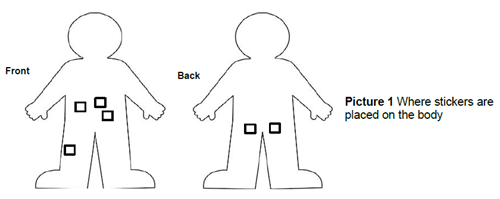Uroflow and Electromyography (EMG) Tests

These tests check how well the bladder and its muscles work. The results will help your child’s health care team create their care plan. The tests tell us:
- how fast urine flows out of the bladder
- if the urine stream starts and stops or is a continuous flow
- how much urine is in the bladder before the test starts
- if your child pushed hard (strains) to pee
- how much urine is left in the bladder after your child pees
- if your child is relaxing the bladder sphincter muscle correctly when peeing
How a Bladder Scan is Done
Your child will have a bladder scan to make sure there is enough fluid in their bladder for the uroflow test. If there is not enough urine in the bladder they will need to drink more fluid. For the bladder scan, a small amount of gel is put on your child’s lower abdomen. A small, handheld ultrasound takes images to see how much urine is in their bladder.
How a Uroflow Test is Done
After the bladder scan, your child will have a full bladder for the uroflow test. They will pee in a special toilet connected to a computer to measure:
- the amount of urine in the bladder
- how long it takes to urinate (pee)
- how fast the urine comes out
They will then have a second bladder scan to see how much urine is still in their bladder.
The EMG
The EMG (electromyogram) records how certain muscles work. The EMG shows how well your child’s sphincter muscles work with the bladder muscle.
If your child is having trouble holding their pee, their health care provider may order this test. It is done at the same time as the uroflow test.
How an EMG/Uroflow Test is Done
If your child gets an EMG and uroflow test at the same time, you can expect the following:
- Six electrodes (small stickers that help to measure muscle activity) will be placed on your child. They measure how the muscles work that control urination and if the abdominal muscles are used while peeing (EMG test). The stickers are put on your child’s skin as follows (Picture 1):
- two stickers are put on the buttocks close to the anal opening
- one electrode is put on the child’s knee
- three stickers are put on the child’s stomach
- Once the stickers are in place, your child will have the uroflow test. You may stay in the room with your child during the procedure. After your child has finished peeing, a second bladder scan is done to see how much urine is still in the bladder. This is called the post void residual (PVR).

Getting Ready for the Test
It is very important that 1 hour before the test your child drinks enough fluid to have a comfortably full bladder. The bladder MUST be comfortably full for us to do the test. Use the chart below to see how much your child needs to drink based on their age.
| Age | Fluid Amount |
| 0-2 | Give fluids for 1 hour before the exam. |
| 3-4 | Drink 6-8 ounces of liquid one hour before the exam. Do not use the bathroom. |
| 5-10 | Drink 12-16 ounces of liquid one hour before the exam. Do not use the bathroom. |
| 11-adult | Drink 16-20 ounces of liquid one hour before the exam. Do not use the bathroom. |
We ask your child to keep sipping water until the test starts. We know this is hard, but your child cannot pee (urinate) for 2 hours before the test. If your child’s bladder is not comfortably full at the time of the test, the test will not be accurate, and we may need to reschedule.
Test Results
The provider will review the test within two weeks. The clinic will contact you with the results and talk about next steps in your child’s plan of care.
If you have any questions about this test call the Urology Clinic at 614-722-6630.
HH-III-157 © 2021, Nationwide Children’s Hospital

